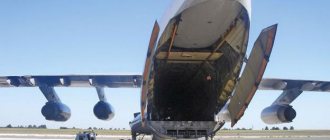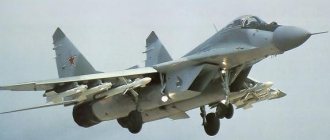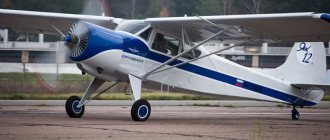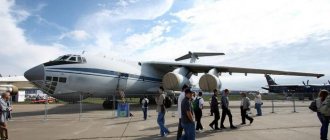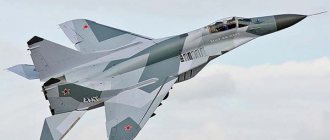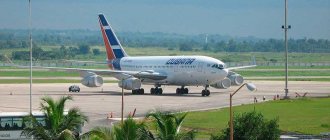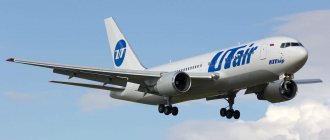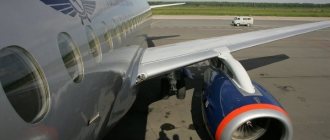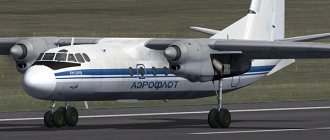Photos of the Tu-154 aircraft can now be found mainly on the Internet, since it has long been withdrawn from passenger service. Among the pilots he was often called “Aurora”, “Big Carcass” or “Fifty Dollars”. In Soviet times, this tri-engine airliner was popular and carried from 152 to 180 passengers on board, while the cruising speed of the Tu-154 aircraft exceeded the stated 900 km/h. The development was carried out by the no less famous OKB im. Tupolev. The capacity of the liner is 180 people.
Airplane Tu-154
More about the plane
It made its first takeoff in early October 1968. In the period from 1970 to 1998, the model was serially produced, during which several stages of modernization took place. In history, the shortest flight was noted, amounting to about 190 km from Tashkent to Namangan, and one of the longest – more than 5 thousand km from Moscow to Yakutia (Neryungri). The aircraft had individual characteristics:
- complexity in terms of mass passenger transport;
- maintenance required highly qualified personnel, both flight and ground;
- The rear location of the engines creates conditions for reducing noise in the cabin and makes it possible to turn around in the event of engine failure. In this case, problems arise related to the operation of the stabilizers and the engines themselves, when a large angle of attack and rear centering occur, which generally leads to the development of surging and complete failure of the side and middle engines, then to the loss of efficiency of the steering height control. All these failures more than once created the conditions for disasters, which were accompanied by a flat tailspin and the absence of the possibility of exiting this situation.
In the winter of 2013, production of this aircraft model was officially discontinued.
The cockpit of the Tu-154 aircraft
Interior layout options
In recent years, both single-class and two-class options have been used:
- 166 seats, designed only for economy class.
- 134 seats, of which the first 12 are business class, the next 18 are comfort class and 104 seats are allocated to economy class.
- The most popular layout was the cabin with 131 seats, where the first four rows were occupied by business class according to the 2+2 scheme, and the rest - economy class according to the 3+3 scheme.
From the photo of the interior of the Tu-154 aircraft and from the reviews of passengers, one can understand that this aircraft also has its worst and best seats. Let's look at them using the example of a two-class layout.
Of course, the best seats are the business class seats. They are softer and have a longer stride. Cradles are not installed here, meaning the baby’s crying does not interfere with the flight. Seats located in the fourth row are considered less comfortable in “business”, since next to them in most aircraft models there are toilet rooms and a partition separating “business” from “economy”. But on some boards there is no toilet in this part.
In economy class, the mounting system for bassinets is located immediately behind the “business” seat on the fifth row, so in this area, in addition to the toilet, a comfortable flight can be disturbed by children, noise from the queue for the toilet and unpleasant odors. However, the fifth row itself has a number of advantages: there are no seats in front of it, which means no one can recline the seat back onto the passenger’s lap.
According to reviews, the most comfortable seats were the seats in rows 11 and 19. They are located near the escape hatches and there is much more legroom here. The most uncomfortable seats are located in row 28, since the toilet rooms are located next to them, plus the backs of the seats here do not recline, since there is a toilet wall behind them. In addition, since the engines of the airliner are located in the tail section, there is much more noise from them here.
Important historical moments
The main goal pursued by the designers when developing the airliner was related to the need to replace models such as the An-10, Tu-104 and Il-18 . The OKB carefully dealt with this issue, because the country needed a new, modernized airliner in its parameters, not inferior to the American Boeing 727 prototype. I would like to note the following significant events from the history of the Tu-154:
- in 1966, the first prototype of an experimental aircraft was created;
- the first flight took place on October 3, 1968, and the following year it was presented at the world famous exhibition of the Le Bourget Air Show;
- Initial use was associated with the transportation of mail from the capital to different cities, and since 1972 it was transferred to the famous air carrier Aeroflot and was used for local passenger transportation. A little later transferred to international flights;
- from 1975 to 1984 inclusive, it was modified several times. For example, the engine was replaced with a more powerful one, the take-off weight was increased;
- in the same 1984, a certain number of “Carcass” were redone. Some in the amount of 9 pieces - for cargo aircraft, others (5 pieces) - in the laboratory in connection with ongoing tests of the space shuttle, and others (2 units) - for aircraft carrying out comprehensive control over the activities of the CIS and NATO countries.
The Tu-154 was entrusted with the main functions of transporting passengers both within the country and abroad. These aircraft were purchased by numerous airlines, and some units became the property of the Soviet Air Force.
Salon Tu-154
Tu-154 modifications
What other modifications does the Tu-154 interior have? The photos clearly show the difference between the improved version of the Tu-154A and the Tu-154B, although the main changes have occurred in the technical equipment of the sides. For example, the latter received an additional fuel tank and emergency exits in the tail. And the above-mentioned capacity of 180 people in a single-class configuration affected the modification of the Tu-154B-2.
The most popular modification was the Tu-154M. This is an improved version of the Tu-154B-2. It was equipped with jet engines and improved avionics, resulting in increased fuel efficiency and increased flight range.
There are few of them left
Today, this machine, so famous and recognizable in the past four decades, can be seen in the sky less and less often. It is known that, as of the beginning of 2014, the world fleet of Tu-154 consisted of only eight dozen copies. Thus, the probability of becoming a passenger of the “big carcass” is becoming less and less, but even today it is not zero. Several Russian airlines continue to operate aircraft whose service life has not yet been exhausted. One hundred copies are preserved in flying condition.
The level of comfort of this airliner is quite consistent with modern ideas, especially taking into account the fact that the duration of flights rarely exceeds an hour and a half.
Interesting facts and reviews from passengers
For each aircraft model you can find statistics on how fate dealt with it. 73 sides of the Tu-154 were completely destroyed after the disasters, about 90 aircraft were cut into scrap metal, and 190 iron birds are still awaiting this fate, a restaurant was opened in one copy, and 24 aircraft were turned into museum exhibits. However, about 270 aircraft are still plying the airspace and more than a hundred of them are in excellent condition.
In just 20 years of production, 1025 aircraft of various modifications were created. And an interesting fact is that the Tu-154 was developed from scratch, and not based on existing military models, as happened with its predecessors.
The Tu-154 also has its own flight range record. It was installed on the Moscow-Yakutsk flight and was equal to 4800 kilometers.
According to passenger reviews, the aircraft was more than comfortable in the Soviet years, but today almost all the interiors of the aircraft in use look depressing. The downside of the flight is the strong vibration throughout the cabin, coming from the tail engines.
On aviation forums, some passengers are in favor of completely decommissioning the Tu-154, as they believe that its technical data is very outdated. Many even write that they are afraid to fly on such an “old one”. However, it is worth considering that the life of any aircraft depends on its timely maintenance, and the better it is, the longer the aircraft can serve for the benefit of people.
A Brief History of the Development of Passenger Aircraft
The first aircraft in the world that could carry passengers was a Russian aircraft under the designation “Ilya Muromets”. Despite the fact that this device was manufactured by I. Sikorsky back in 1913, it was quite comfortable for passengers, since it had a restaurant, sleeping quarters and a bathroom on board. A demonstration flight of the vehicle showed that it can carry 16 people.
This aircraft holds the first record for flight range; it was able to cover the distance from St. Petersburg to Kyiv and in the opposite direction. However, the device made only one landing.
Further development of passenger aviation was aimed at the production of smaller single-engine aircraft, such as K-1, Stal-2, PS-35. Nevertheless, the first passenger airliners that were mass-produced were the LI-2 and PS-84 aircraft; in the USA it was the DC-3.
During these years, the Ford Trimotor became a mass-produced vehicle for transporting passengers; it was manufactured in the USA. It was an aircraft with three piston engines, and the passenger capacity was 8 people. Production ended in 1933, but even after that they continued to be used for a long time. It was replaced by a new aircraft, the DC-3. It should be noted that this device is the most widely produced passenger airliner in the world. The aircraft had the ability to carry up to 32 people on board.
In European countries of the pre-war period, the Ju52 became the highest quality aircraft for transporting passengers. Airplanes with float landing gear were also widely used.
At the end of the war, the production of passenger aircraft was carried out on the basis of the modernization of existing heavy bombers. And with the advent of the jet engine in aviation in the 50s, the development of passenger airliners reached a qualitatively new level of development. Thus, in the summer of 1949, a British aircraft of the De Havilland Comet type took off for the first time; it was not a completely successful development, since many crashes were recorded, and in 1954 it was withdrawn from flights. The leader in the passenger aircraft industry remained the USSR with its Tu-104 (manufactured in 1955) and the American Boeing 707 (manufactured in 1954).
Further development and successes were represented by passenger aircraft from Boeing and Airbus corporations. The first supersonic airliners for transporting passengers appeared in the 60s and were represented by the domestic Tu-144 and the European Concorde. These devices were soon taken out of service due to crashes.
The aircraft that are manufactured today are not much different in appearance from the aircraft of the 60s
Modern aircraft manufacturing focuses its attention on creating more economical and less noisy aircraft power plants. An important aspect remains the provision of high-quality avionics
When creating new aircraft, a large number of composite materials are used, which help reduce the weight of the structure.
Specifications
According to technical specifications, the Tu-154 has a length of 47.9 m and a height of 11.4 m. The wingspan is 37.55 m and the ship is considered a monoplane. The fuselage width is 3.8 m.
The maximum flight range has been improved to 3,600 kilometers, and the altitude ceiling to which the Tu-154 can climb during a flight is 2,200 meters. The maximum speed that the airliner can reach is 900 km/h. The number of flight crew members varies depending on the aircraft model, for example, on the Tu-154M - 3 people, on the Tu-154B - 5 people.
Capacity, flight range, speed, altitude
Boeing 747 airplane
Technical characteristics and flight performance of the TU 154 family aircraft (the most popular modifications)
| Characteristics | Tu154B | Tu154M |
| Takeoff weight | 98000 kg | 100000 kg |
| Empty weight | 51000 kg | 55000 kg |
| Maximum flight speed | 900 km per hour | 935 km per hour |
| Maximum flight altitude | 12.3 km | 12.1 km |
| Maximum range | 2.6 thousand km | 3.9 thousand km |
| Liner length | 47.9 meters | 47.9 meters |
| Crew composition | 5 people | 3 persons |
| Passengers, max. | 180 people | 175 people |
A design feature of the Tu-154 is the location of the engines in the rear of the aircraft: one inside the fuselage compartment, two on the sides in special nacelles.
The Tu-154 has an aerodynamic design characteristic of a cantilever low-wing aircraft, i.e. the wing is located in the lower part of the fuselage, it is swept-shaped, the tail is T-shaped. The engines are turbojet engines with two circuits. This arrangement leads to the fact that the tail of the aircraft weighs much more than the rest of it and requires powerful landing gear to prevent the aircraft from stalling on its tail (the TU-154 has as many as 10 of them, after takeoff they are removed into a separate compartment on the wing). At the same time, it prevents debris from being sucked into the engines during takeoff and landing, as well as birds being hit during flight. According to aviation experts, this brand of aircraft is quite difficult to operate for an ordinary mass passenger airliner.
Application
At the end of 2015, Russian Airlines operated less than one hundred Tu-154B and Tu-154M airliners. Among the largest owners is aviation, with about 15 aircraft.
In the countries of the former Soviet republics, a significant number of passenger aircraft remain. The largest owner is Kazakhstan, with about 12 aircraft flying on its airlines. Belarus owns five cars.
Tajikistan, also has five aircraft in its fleet. Kyrgyzstan, Uzbekistan and Azerbaijan have three aircraft each. North Korea and China each have two Tu-154 aircraft.
Iran has imposed a complete ban on the operation of Tu-154 aircraft since February 2011. Former fraternal countries in the socialist camp: the Czech Republic, Bulgaria and Slovakia contain the Tu-154 “Salon” configuration for the top officials of the state.
Polish Airlines had a Salon aircraft, but it was lost in a crash with all crew members and passengers on April 10, 2010. The Minister of Defense of the Polish Republic stated that, according to the recorder, noises of an explosion were heard on board.
Terrorist attack, the main version of the Polish investigative commission. No matter how much Russian investigators convince their Polish colleagues that there was no explosion, no one can put an end to the investigation.
